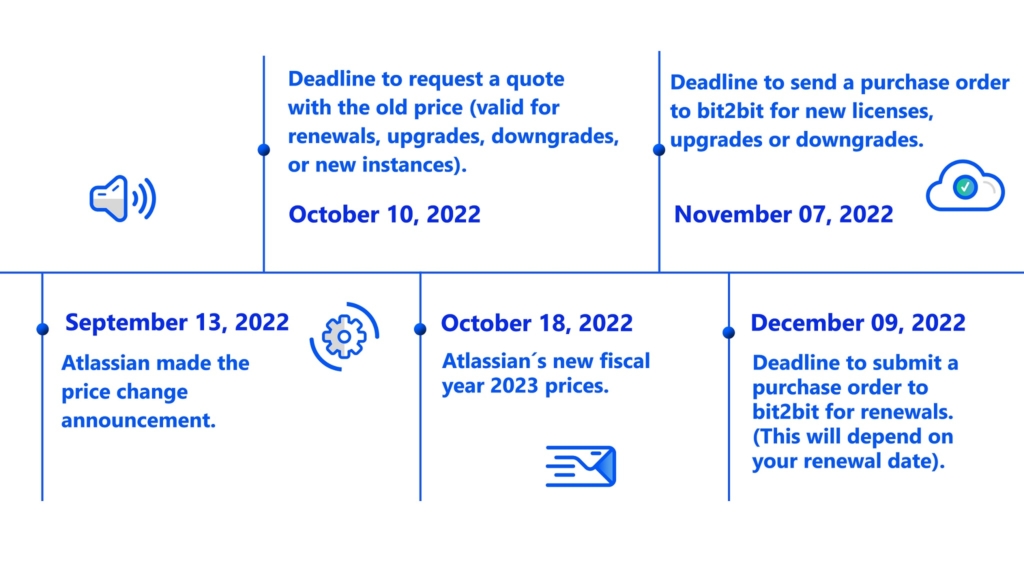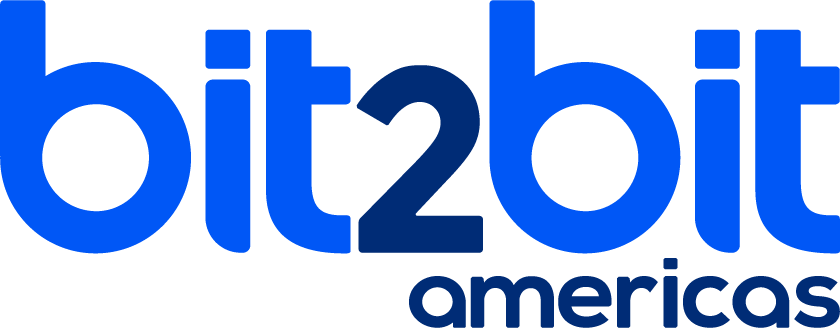News
Future Cloud Pricing Tables
On September 13, Atlassian announced a price increase for its Atlassian Cloud licenses. This change is due to constant tool improvements in both performance and security, powerful integrations with Atlassian and third-party plugins, ease of use in search and reporting, and more. Learn more about important dates, new prices, and our recommendations below.
You can find the official announcement here. At bit2bit Americas we want you to be aware of these changes and we are ready to help you. Count on us!

Important changes for October 18, 2022:
October 18 PT (Pacific Time):
Price increase for Cloud (Standard, Premium, Enterprise) goes into effect
Which products will be affected and how will prices increase?
Applies to the following Cloud products:
List price (Average increase of 5%*) for Standard, Premium and Enterprise plans:
Jira Software: All users ranges
- Jira Service Management: All users ranges
- Confluence: All users ranges
*Note: The % increase will depend on each product, user range and date the licenses were purchased for the first time. Contact us to confirm the price increase that applies to you.
Notes
- This price increase only applies to some products of the Atlassian brand.
- Apps (plugins) from the Marketplace of other manufacturers are not included and are subject to the conditions of each manufacturer.
- The increase applies to Cloud edition products.
- You can find the table with the price increase per product in the following links:
Recommendations
In this context, bit2bit Americas has the following recommendations for you and your team:
If you have products with upcoming renewal in the Cloud
Renew as soon as possible to take advantage of the current prices before they change, taking into account that the quote must be requested from bit2bit Americas until October 10, 2022 at the latest.
If you plan to upgrade or downgrade in Cloud in the coming months
The quote must be requested from bit2bit Americas until October 10, 2022.
If you plan to purchase Cloud products in the coming months
- The quote must be requested from bit2bit Americas until October 10, 2022.
If you have Server or Data Center licensing and want to explore a migration to the Cloud
Contact us to guide you in your evaluation!
Do not hesitate to contact us and we will be happy to schedule a call in the following weeks to answer all your queries and those of your team. You can write to us at: ventas@bit2bitamericas.com.
Important Links:
We share other links that may be of interest to you:
Frequent questions: FAQ
Cloud Product Enhancements by Atlassian: Product investments
- Roadmap Cloud: Roadmap

Comparte esto:
Related news
News
Important pricing updates for Atlassian Data Center. Last Tuesday, January 16, Atlassian announced a price increase in its...
News
Power, improve and monitor your company's IT services. Learn more about the Atlassian ITSM solutions we have at bit2bit Americas.



